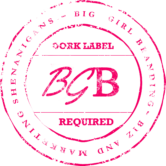Universal Laws of Good Copywriting Part 3
If you’ve been following along, you will see that we’re now on Part 3 in this “Copywriting Rules” series of articles.
Throughout these articles, we’ve gone through several important copywriting rules. To reiterate, these rules were:
* Set out writing to one person.
* Use your prospect’s language.
* Use emotion.
* Time’s ticking, make sure you keep their attention.
* Make the copy visually compelling.
Now we’re going to go through even more rules you should know about in making the best possible piece of sales copy.
Rule #6: Make it easy for people to buy.
Don’t give your readers a reason to say no. Remove as much risk as you possibly can. You can do this in a few ways, with the most obvious being a secure guarantee.
Many copywriters find that the more outrageous and secure the guarantee, the better the conversions. The ironic part, though, is that the longer the guarantee period, the less refunds a company usually gets.
This could be because most people put off putting things back until “later”, whereas they have a sense of urgency with a shorter guarantee period.
Whatever the reason, a strong guarantee makes it hard for your prospect to say no. If you tell them that if they don’t like your product they can get their money back, they have no reason to object. They have absolutely nothing to lose by trying your product out.
On the other hand, if they have to take on a lot of risk, they’re going to be more apprehensive about buying. In this Internet age, a lot of people are nervous about being scammed. If you haven’t yet done business with a prospect, they’re going to be wary – and rightfully so.
Don’t give them any reason to turn you away.
Rule #7: Use scarcity.
Like we mentioned earlier, people are quick to put things off until the elusive “later”. By using scarcity, you will force people into moving NOW.
You probably see this in action all the time. Department stores use sales to get people to buy by a certain time. Infomercials will give you an extra widget if you order “in the next 5 minutes!”. High-end automobile manufacturers only have “x” amount of limited editions for certain cars.
There are several ways in which you can implement scarcity. You can:
* Limit your product or service to “x” amount of people
* Only give special pricing to “x” amount of people
* Have a special deal/coupon for people who order by “x” date
All of these things are designed to make people move quickly, thinking that they’ll “lose out” if they don’t.
It’s important to remember that whatever scarcity tactic you choose to employ, that you make sure to honor and uphold that. Lying one time may get you sales the first time, but it can severely damage your ability to make more sales down the road.
